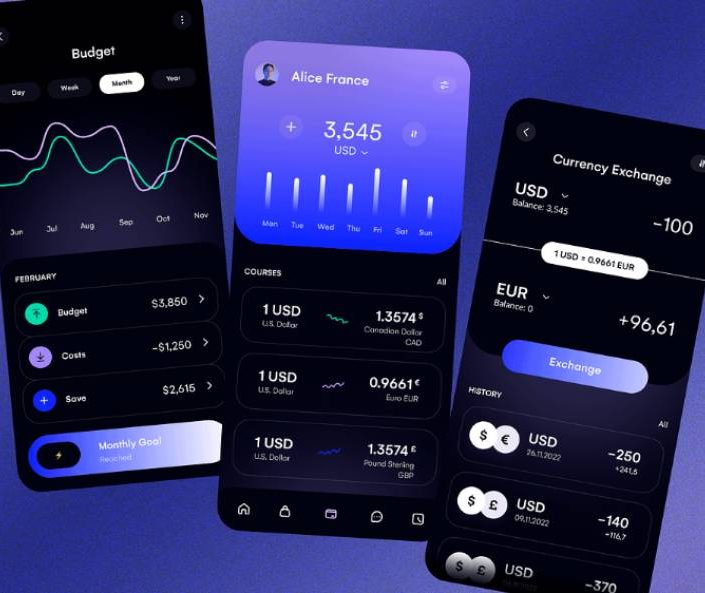-
6 mins read

Absolutely, Jenny! Here’s a full, SEO-optimized, long-form article for your title “How do I know if my startup will be profitable?”, written in a friendly, conversational tone, with headings, subheadings, conclusion, and FAQs.
How Do I Know If My Startup Will Be Profitable?
Starting a business is exciting, but one of the biggest questions every entrepreneur faces is: Will my startup be profitable? Profitability isn’t just about making money—it’s about sustainability, growth, and knowing that your hard work will pay off. In this article, we’ll explore practical ways to evaluate your startup’s potential profitability and make informed business decisions.
1. Understand Your Market
The first step to knowing if your startup will be profitable is understanding the market you’re entering. Ask yourself:
- Who are my target customers?
- What problems am I solving for them?
- How big is the market for my product or service?
A clear understanding of your market helps you estimate potential sales and ensures there’s enough demand to support your business. Market research tools, surveys, and competitor analysis are invaluable in this step.
Pro Tip: Focus on a niche market initially. Serving a specific audience often increases profitability faster than trying to reach everyone.
2. Analyze Your Competition
Competition can make or break a startup. By analyzing competitors, you can see what works and where gaps exist. Look for:
- Their pricing strategies
- Marketing approaches
- Customer feedback and reviews
Understanding your competitors’ strengths and weaknesses helps you position your startup to attract customers effectively.
SEO Tip: Include competitor keywords in your strategy to rank higher in search engines and attract your target audience organically.
3. Estimate Costs Accurately
Knowing your expenses is crucial for predicting profitability. Start by listing:
- Fixed costs: Rent, salaries, software subscriptions
- Variable costs: Production, shipping, marketing campaigns
- Unexpected costs: Contingency for emergencies or unexpected growth
Once you have a clear picture of your expenses, you can calculate your break-even point—the moment your revenue covers your costs.
4. Forecast Your Revenue
Revenue projections are key indicators of profitability. To forecast revenue:
- Estimate how many units or services you can sell monthly.
- Multiply by your pricing.
- Consider seasonal trends, market growth, and customer behavior.
Example: If you sell a product for $50 and estimate selling 500 units per month, your monthly revenue would be $25,000. Comparing this with your expenses helps you see if profit is realistic.
5. Calculate Profit Margins
Profit margin is the percentage of revenue that remains after covering costs. A healthy profit margin ensures long-term sustainability.
- Gross profit margin: Revenue minus cost of goods sold (COGS) ÷ Revenue × 100
- Net profit margin: Revenue minus all expenses ÷ Revenue × 100
A higher margin indicates more room for reinvestment and growth.
6. Validate Your Business Model
A profitable startup requires a strong, scalable business model. Consider:
- Is your product or service unique?
- Can you scale without drastically increasing costs?
- Does your pricing reflect the value you provide?
Test your model with a Minimum Viable Product (MVP) to gauge customer interest before investing heavily.
7. Monitor Key Performance Indicators (KPIs)
KPIs provide insight into the health of your business. Important profitability indicators include:
- Customer acquisition cost (CAC)
- Customer lifetime value (CLV)
- Gross and net profit margins
- Monthly recurring revenue (MRR)
Tracking KPIs allows you to adjust strategies proactively and ensure your startup remains profitable.
8. Seek Feedback and Mentorship
Talking to experienced entrepreneurs or mentors can reveal insights you might have missed. They can help you:
- Avoid common pitfalls
- Improve efficiency
- Optimize pricing and marketing strategies
Insider Tip: Join startup communities and attend networking events to gain real-world perspectives on profitability.
9. Plan for Long-Term Growth
Profitability isn’t just about immediate returns. Consider:
- Expansion opportunities
- Product or service diversification
- Reinvesting profits for scaling
A startup that plans for sustainable growth is more likely to maintain profitability over time.
Conclusion
Knowing if your startup will be profitable requires a combination of research, planning, and continuous monitoring. By understanding your market, analyzing competitors, forecasting revenue, and tracking key performance indicators, you can make informed decisions and increase your chances of success. Profitability is not just a number—it’s a reflection of your startup’s potential for sustainability, growth, and long-term impact.
FAQs
Q1: How soon can a startup become profitable?
It depends on the industry, market demand, and your business model. Some startups see profit in a few months, while others may take years.
Q2: Can a startup be profitable without high sales?
Yes, if your margins are high and costs are controlled, even low sales can yield profit.
Q3: What is the biggest mistake entrepreneurs make when assessing profitability?
Overestimating revenue and underestimating costs is the most common mistake. Accurate forecasting is crucial.
Q4: Should I consider external funding to reach profitability faster?
External funding can accelerate growth, but it comes with risks like equity dilution and debt. Evaluate carefully before deciding.
Weekly trending
How do I know if my startup will be profitable?
- 6 mins read
How to Turn a Simple Idea Into a Profitable Startup
- 6 mins read
Top Financial Management Apps for Modern Life
- 6 mins read
How to Learn New Skills in Just 30 Minutes a Day
- 6 mins read
AI vs Humans: Who Will Lead the Future?
- 6 mins read






